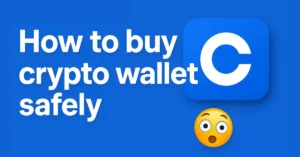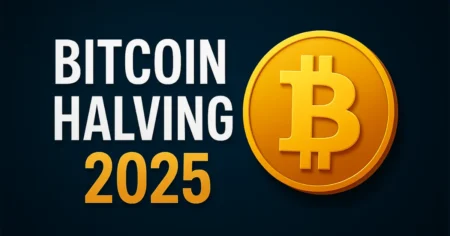Introduction
“What is Blockchain Technology?” Blockchain technology has become one of the most talked-about innovations in the digital world. From powering cryptocurrencies like Bitcoin to transforming industries like finance, healthcare, and logistics, blockchain is making headlines everywhere. But what exactly is blockchain, and why is it such a big deal?
If you’ve ever felt confused by technical jargon or overwhelming explanations, don’t worry, you’re not alone. In this article, we’ll break down blockchain technology in the easiest way possible, so anyone can understand how it works and why it matters.
Whether you’re just curious, a beginner in crypto, or exploring platforms like Coinsify, this guide will help you grasp the basics and see how blockchain is changing the future, one block at a time.
Why is Blockchain Technology Important?
Blockchain is not just a trend; it’s a game-changing technology that’s transforming how we store, share, and secure data. Here’s why it’s so important in today’s digital world:

Decentralization
- Unlike traditional systems that rely on a central authority (like banks or governments), blockchain is decentralized.
- This means no single person or organization controls the entire network, making it more open and fair.
Security and Trust
- Data stored on the blockchain is encrypted and nearly impossible to alter or hack.
- Every transaction is verified by the network, creating trust between users without needing a middleman.
Transparency
- All transactions on a public blockchain can be viewed by anyone, which increases accountability.
- This is especially useful in industries like supply chain, finance, and voting systems.
Efficiency and Speed
- Blockchain can speed up transactions and reduce paperwork.
- It eliminates the need for third-party verification, which often causes delays in traditional systems.
Cost Reduction
- By cutting out intermediaries (like banks or brokers), blockchain can reduce transaction fees.
- Businesses can also save money by automating processes using smart contracts.
Use Across Multiple Industries
- From cryptocurrency platforms like Coinsify to healthcare, real estate, and even entertainment, blockchain has wide-ranging applications.
- It’s being used to verify identities, track products, secure medical records, and more.
What is Blockchain Technology? Explained Simply (Step-by-Step Guide)
Understanding blockchain doesn’t have to be complicated. Think of it like a digital notebook that records information in a safe and organized way. Here’s a step-by-step guide to help you grasp how it works:

Step 1: Think of a Block as a Page in a Notebook
- Each block contains data — this could be anything like transaction details, records, or even a smart contract.
- Once the block is full (just like a page), a new block is created.
Step 2: Linking Blocks Together
- Each new block is linked to the previous one, creating a chain — this is where the name blockchain comes from.
- These links are secured using cryptography, so the data inside can’t be changed easily.
Step 3: The Role of the Network
- Blockchain runs on a network of computers (called nodes).
- Every time someone wants to add a new block, the network must agree it’s valid — this is called consensus.
Step 4: No Middleman Needed
- Traditional systems (like banks) need a central authority to verify transactions.
- Blockchain skips this step. Since everyone in the network has a copy of the blockchain, they can all verify information independently.
Step 5: Data Becomes Permanent
- Once a block is added, it can’t be changed or deleted.
- This makes blockchain secure and trustworthy — perfect for platforms like Coinsify that deal with sensitive transactions.
Step 6: Real-World Analogy
- Imagine using Google Docs. Multiple people can access and view the same document in real time.
- Blockchain works similarly: instead of one person keeping the file, everyone sees and updates it together — safely and securely.
Final Thoughts:
Blockchain is simply a new way of storing and sharing information that is decentralized, secure, and transparent. It’s not just for tech experts or crypto traders — it’s a technology that’s slowly becoming part of everyday life.
Advantages and Disadvantages of Blockchain Technology
Like any technology, blockchain has its strengths and limitations. Let’s look at both sides to understand it better.
Advantages of Blockchain Technology
| High Security Data on the blockchain is encrypted and linked to previous blocks, making it extremely hard to tamper with. |
| Decentralization No single authority controls the system, which increases trust and reduces the risk of corruption. |
| Transparency Everyone in the network can see the transaction history, which promotes honesty and accountability. |
| Cost Savings By removing the need for third parties (like banks or brokers), blockchain reduces transaction and processing fees. |
| Faster Transactions Blockchain operates 24/7 and doesn’t rely on manual approvals, making processes quicker. |
| Accessibility Anyone with internet access can participate in blockchain networks, opening up new opportunities worldwide. |
| Reliable Record-Keeping Once data is recorded, it cannot be changed. This makes blockchain great for storing medical records, legal documents, and financial data — even platforms like Coinsify benefit from this reliability. |
Disadvantages of Blockchain Technology
| Scalability Issues As more data is added, blockchains can become slower and harder to manage. |
| Energy Consumption Some blockchain networks (like Bitcoin) use a lot of computing power, which consumes large amounts of electricity. |
| Lack of Regulation Because blockchain is still new, many governments haven’t fully created laws around it — this can create uncertainty. |
| Irreversible Transactions If a mistake happens in a transaction, it cannot be undone — there’s no “undo” button. |
| Complexity For beginners, blockchain can seem confusing and technical. User-friendly platforms like Coinsify help bridge this gap, but the learning curve is still there. |
| Data Privacy Concerns Even though transactions are secure, public blockchains make data visible to everyone,whichhh might not suit all use cases. |
Common FAQs About Blockchain Technology
What exactly is blockchain in simple words?
Blockchain is like a digital notebook that keeps records of transactions. These records (called blocks) are connected in a chain and stored across many computers, so they can’t be changed or erased easily.
Who controls the blockchain?
No single person or company controls the blockchain. It is decentralized, meaning it’s run by a network of computers working together.
Is blockchain only used for cryptocurrencies like Bitcoin?
No, blockchain is used for many things beyond cryptocurrencies. It’s also used in healthcare, supply chains, real estate, voting systems, and by platforms like Coinsify to manage secure transactions.
Can blockchain be hacked?
It’s extremely difficult to hack a blockchain because the data is encrypted and spread across many computers. While no system is 100% safe, blockchain is considered very secure.
What is a smart contract?
A smart contract is a self-executing program stored on the blockchain. It automatically does something (like sending money) when certain conditions are met — without needing a middleman.
Is blockchain legal?
Yes, in most countries, blockchain is legal. However, how it’s regulated depends on where you live. Some countries are still figuring out the rules for cryptocurrencies and blockchain use.
Can I use blockchain without knowing coding or tech stuff?
Yes! You don’t need to be a developer to use blockchain-based services. Platforms like Coinsify make it easy for regular users to get involved without deep technical knowledge.
Is blockchain free to use?
Using blockchain can sometimes involve small fees, like transaction fees or gas fees (especially on networks like Ethereum). But many blockchains allow users to explore and learn for free.
Conclusion
Blockchain technology might sound complex, but at its core, it’s just a secure and transparent way to store and share information. From powering cryptocurrencies to improving industries, it’s changing how we do things online. With platforms like Coinsify, it’s easier than ever to explore and use blockchain without needing deep tech knowledge. As the world becomes more digital, understanding blockchain is a smart step forward.
Bonus Points: Extra Things to Know About Blockchain

Blockchain is Not Just One Technology
- It combines several technologies — like cryptography, peer-to-peer networking, and consensus algorithms — working together to create a secure system.
Private vs Public Blockchains
- Public blockchains (like Bitcoin) are open to everyone, while private blockchains are used within organizations for internal processes.
Smart Contracts are the Future
- Smart contracts can automate everything from payments to agreements, saving time and reducing errors in business operations.
NFTs are Built on Blockchain
- Non-fungible tokens (NFTs), used in art, gaming, and entertainment, are powered by blockchain and prove ownership of digital items.
Blockchain and Web3
- Blockchain is the foundation of Web3 — a new version of the internet where users control their data, identity, and assets.
Learning is Easy Now
- Thanks to user-friendly platforms like Coinsify, you don’t need to be a developer to explore blockchain. You can learn by using it step-by-step.
Also, read
- What is a crypto wallet, and how does it work? – Coinsify
- 10 Crypto Terms Every Beginner Must Know: Coinsify
- How to Buy Crypto Safely in 2025: Complete Guide – Coinsify
- Bitcoin vs Ethereum: Key Differences Explained: Complete Guide
- Ultimate Blockchain Glossary: Learn Blockchain Terms Easily
- How to Buy Bitcoin Safely (Complete Beginner’s Guide)
- Top 10 Crypto Wallets for Beginners (2025 Edition)
- What is cryptocurrency? A Beginner-Friendly Guide (2025)






